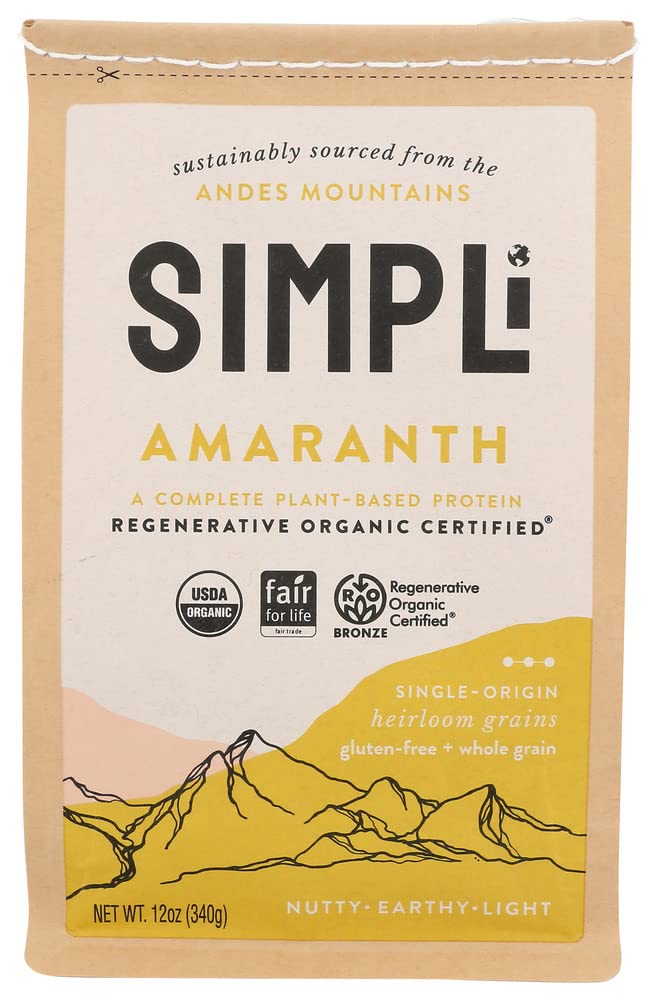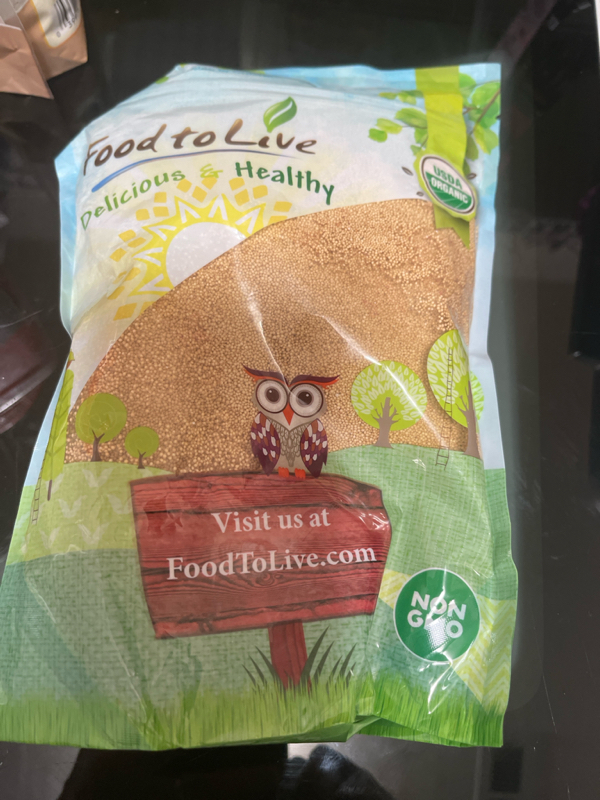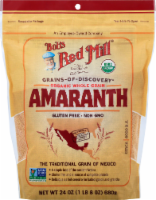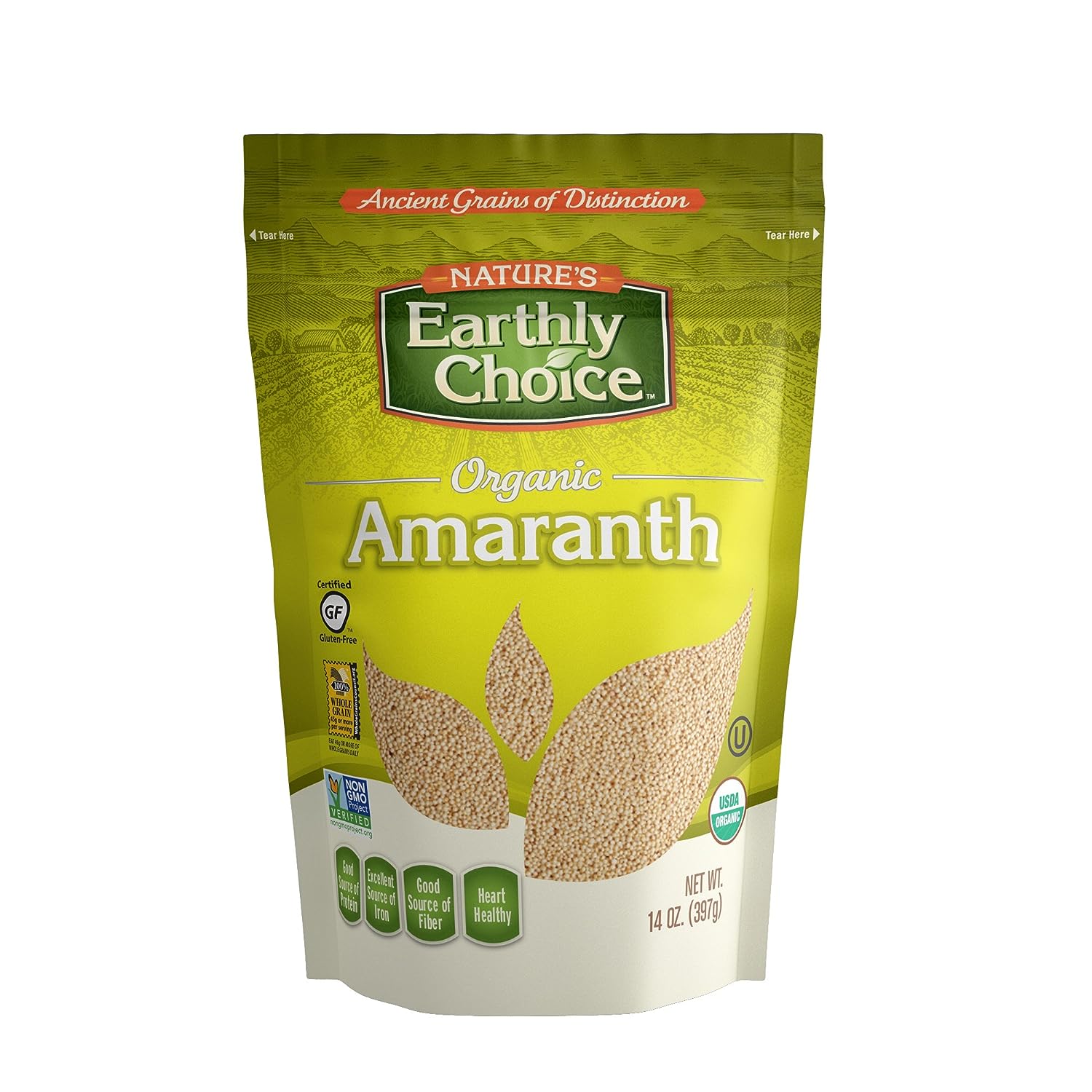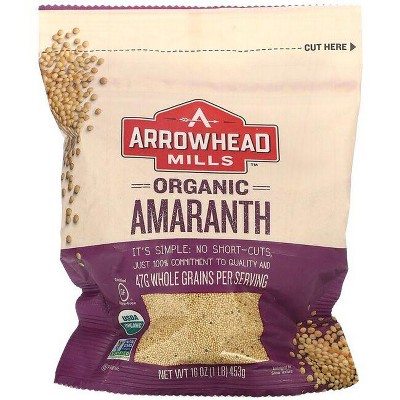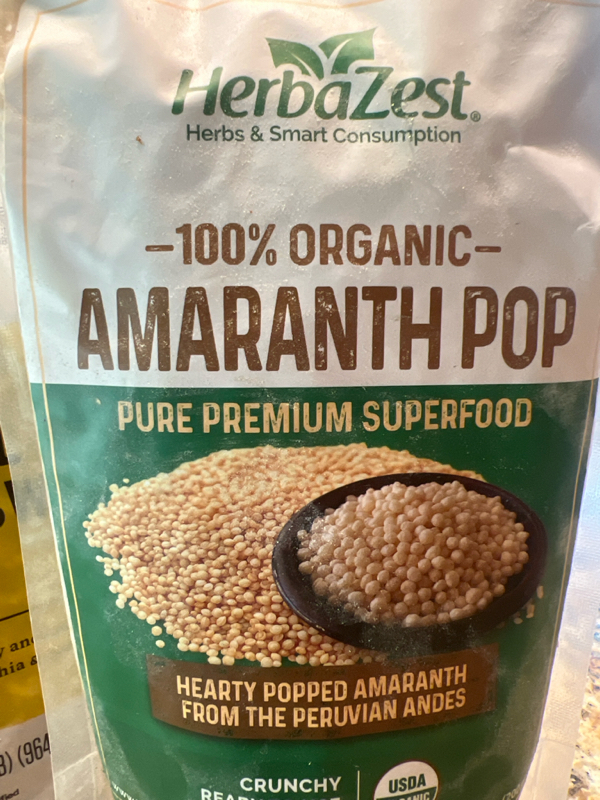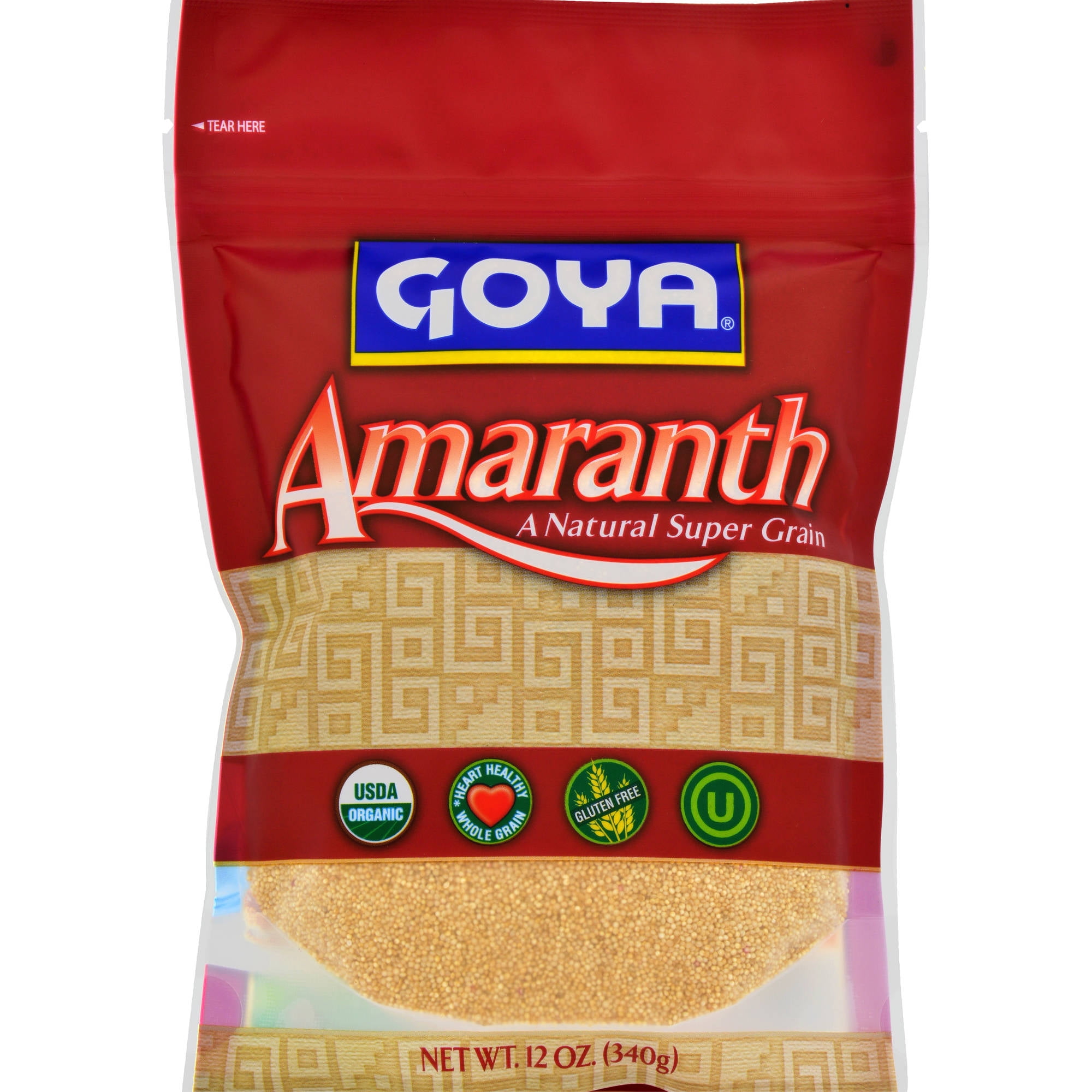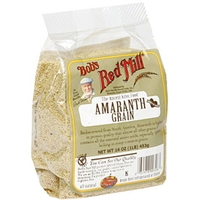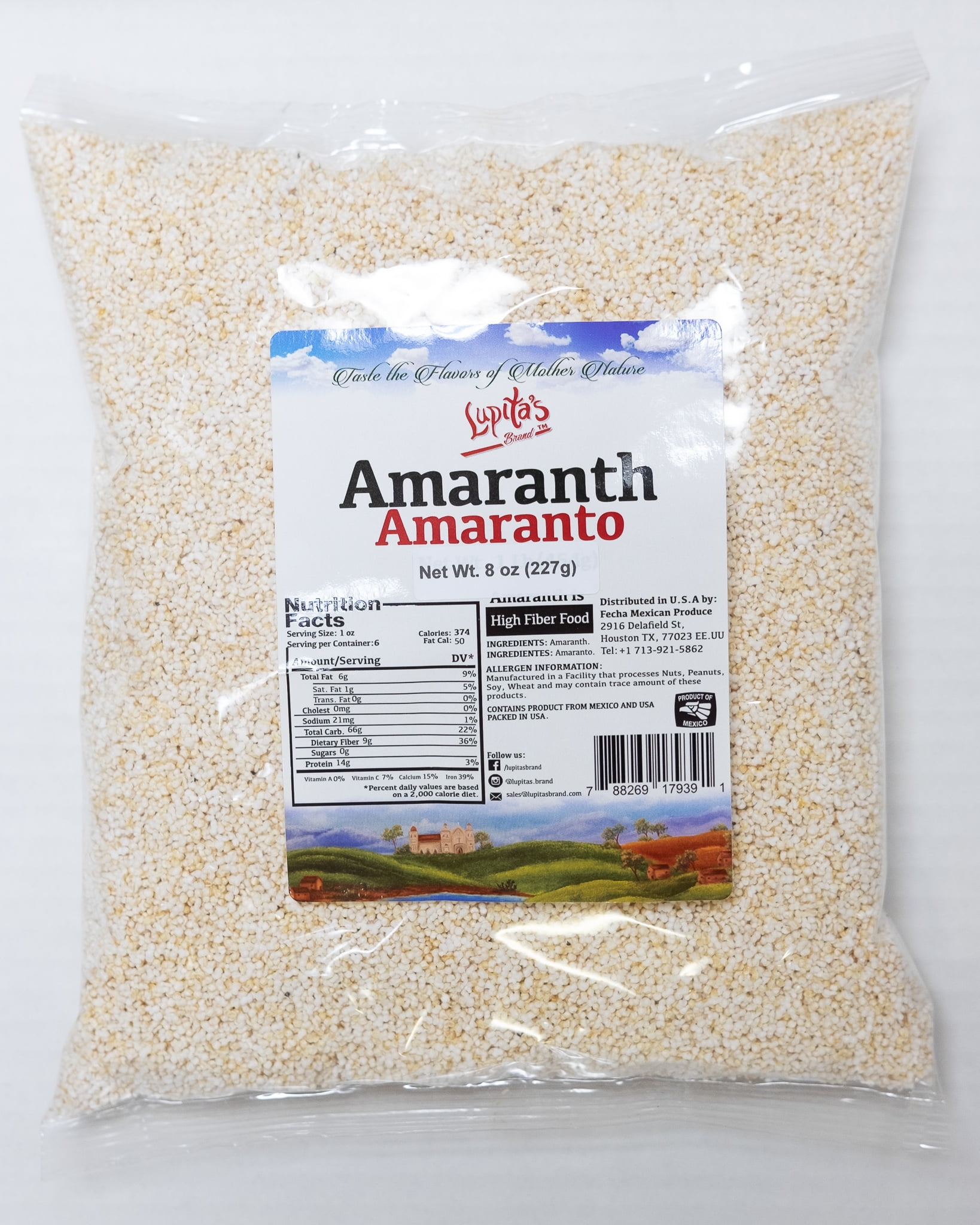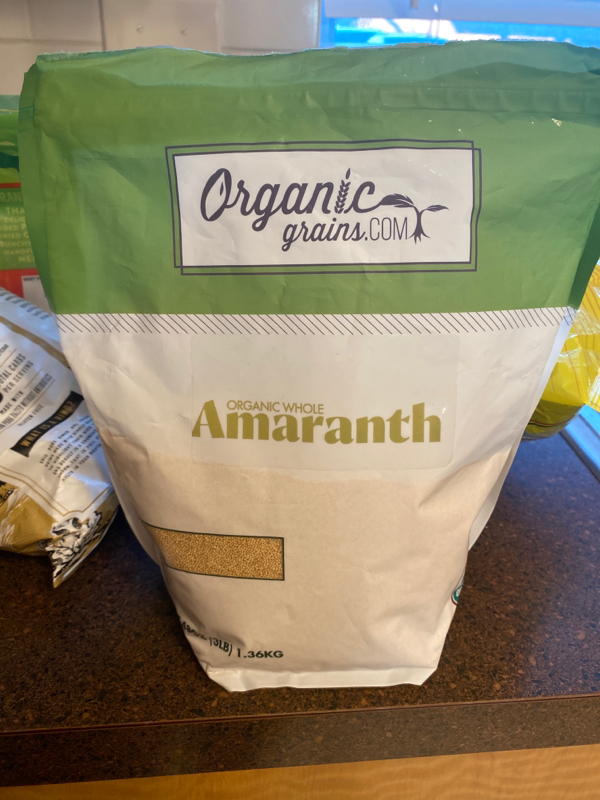BREAKFAST AND BRUNCH
SALADS
SIDE DISHES
Amaranth
Amaranth is an ancient, gluten-free pseudo-grain that has been cultivated for over 8,000 years and used by the Aztec and Inca civilizations as a staple food. Known for its impressive nutritional profile, amaranth boasts high levels of protein, fiber, and essential minerals such as iron, magnesium, and manganese. It is a versatile ingredient that can be cooked and used in various dishes, including salads, soups, and even as a replacement for wheat-based grains in baking.
In the culinary world, amaranth is cherished for its earthy, nutty flavor and slightly chewy texture when cooked. It can be prepared using various cooking methods such as boiling, simmering, or toasting the small, bead-like seeds. Amaranth is also recognized for its unique ability to pop like popcorn, providing a crunchy, wholesome snack or topping.
76%
CARBS
8%
FAT
16%
PROTEIN
47 Amaranth Products
Amaranth Is Frequently Used With
Amaranth FAQ
Though amaranth is relatively easy to cook, it's still common to encounter a few hurdles when preparing this pseudo-grain. The first challenge is understanding the unique quality of the grain. It's essential to realize that amaranth doesn't cook up fluffy like rice; instead, it becomes somewhat glutinous, which might not be what you expect if you've never cooked it before. Another common mistake made by many is not washing and rinsing the amaranth seeds before cooking. This helps remove any dust or foreign materials that might be on the seeds. Moreover, overcooking amaranth can create a sticky or gooey texture which may not be appealing.
To get the most out of amaranth, it's important to properly cook it. Simmer it slowly and ensure the water ratio is accurate. Around 1 cup of amaranth to 2.5 cups of water is generally the preferred ratio for a slightly chewy texture. You can also pop it like popcorn which can be a fun, healthy snack or a crunchy addition to soups and salads.
Little known uses for amaranth include using the leaves in salads or sauteed as a veggie side dish. The grain can also serve as a binder in veggie burgers or meatloaf in place of bread crumbs. Additionally, amaranth flour can be used as a gluten-free thickener for roux, white sauces, and soups.
What is the best way to cook amaranth?
Can amaranth replace other grains?
Why is my cooked amaranth sticky and gooey?
Can I pop amaranth like popcorn?
Is amaranth beneficial for health?
What can I make with amaranth?
What does amaranth taste like?
Can I use amaranth flour in baking?
How to use amaranth leaves?
Can you eat amaranth raw?
Expiration & Storage Tips
When does amaranth expire?
Unopened amaranth can be stored in a cool, dry place and will last for about 6-9 months past the production date on the package. Once opened, the grains should be consumed within 3-6 months for best quality but are safe to eat for up to 12 months if stored properly. Amaranth does not carry well in the freezer as it may compromise its delicate texture and does not significantly extend its shelf life.
How do you tell if amaranth is bad?
If your amaranth has an off smell (like a musty or sour odor), it's likely it has gone bad. Also, if it comes into contact with moisture, it may develop mold and should be discarded. Visibly, mold can appear as a variety of colors and look fuzzy or slimy. If the grains appear dull and have lost their glossy sheen, this may be a sign that they have become stale.
Tips for storing amaranth to extend shelf life
• Store the amaranth in an airtight container to keep out moisture and pests.
• Keep the container at a cool, dry area away from sunlight. Constant warm temperature and light exposure can spoil the amaranth faster.
• Do not store amaranth grains near strong-smelling foods or substances, as they may absorb the odors.
• You could also refrigerate the sealed container of amaranth to extend its shelf life.
• Try to use amaranth in rotation, meaning use older packages before opening new ones. This, known as the 'first-in, first-out' method, ensures you are not storing the grain for excessively long periods.
EXPIRES WITHIN
3 - 3
MONTHS
Health Info
Macros
160g
CARBS
17g
FAT
33g
PROTEIN
Allowed on these diets
LOW FAT
HIGH CALCIUM
VEGETARIAN
PALEO
MEDITERRANEAN
LOW CARB
VEGAN
LACTOSE FREE
GLUTEN FREE

